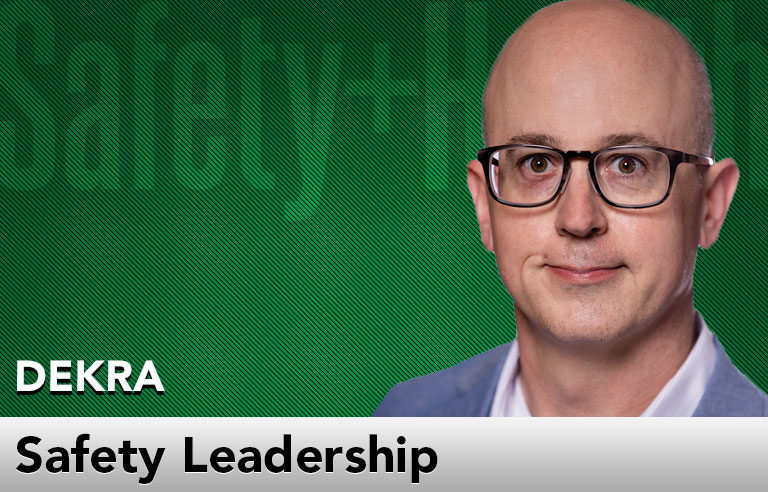Safety Leadership: 3 topics that got our attention in 2022

Editor’s Note: Achieving and sustaining an injury-free workplace demands strong leadership. In this monthly column, experts from global consulting firm DEKRA share their point of view on what leaders need to know to guide their organizations to safety excellence.
As I think back on safety in 2022, a few trends begin to emerge. We continue to manage COVID-19 in the workplace, but attend any safety conference, look on social media or read through your latest copy of Safety+Health and you’re likely to find coverage of:
- Employee mental health and well-being
- Serious injury and fatality prevention
- Workplace violence
The attention given to these topics is much needed.
Employee mental health and well-being directly impacts an organization’s performance
A look at some of the words used in recent headlines – pandemic, inflation, invasion, election, unemployment, recession – is a reminder of the numerous challenges we face, most of which aren’t directly within our control. Adding personal stresses (work- and home-related) to the equation creates a synergistic effect on mental health that can be greater than the sum of its parts.
Over the past year, I’ve seen many high-performing organizations take a strong stance on mental health challenges and employee well-being, including:
- Understanding how workplace conditions and culture can affect employee mental health
- Ensuring leadership prioritizes mental health and well-being
- Working to prevent mental distress and providing support to employees
- Making resources available to, and known by, employees. For every dollar invested in mental health treatment, there’s a $4 return in improved health and productivity.
SIF prevention is becoming more engrained
When the Bureau of Labor Statistics released its 2020 Census of Fatal Occupational Injuries, the data showed a 10.7% decrease in workplace fatalities (to 4,764 from 5,333). Not surprisingly, the normalized fatal work-injury rate showed a marginal decrease of 3% (to 3.4 per 100,000 full-time equivalent workers from 3.5). As a result, SIF prevention has continued to be a hot topic.
As more and more organizations begin to understand controlling or eliminating exposures with SIF potential versus solely trying to eliminate fatalities by reducing first aid cases (think the Heinrich triangle), the tide begins to shift. Now that organizations understand this new paradigm, they’re focusing on how to incorporate SIF prevention into their safety management systems. As SIF prevention continues to evolve, incident classification, systems and processes, scheduled vs. unscheduled, corrective actions, governance, exposure-reduction teams, etc., are topics of conversation.
Workplace violence continues to alarm
Think back to a decade ago. How many times did we include a discussion on active-shooter situations? Not very often, I’d guess. Today, these conversations are routine. It’s an unfortunate reality, so we must be proactive in our planning and preparation.
According to BLS, about 20,000 employees in private industry experienced trauma in the workplace in 2020. And about 390 employees were homicide victims. As a result, organizations are fortifying their systems by:
- Reviewing their zero-tolerance policies
- Training employees to recognize the warning signs
- Conducting emergency preparation and response through tabletop exercises
- Providing worksite assessments to help identify hazards and employee protections
- Fostering psychological safety
Looking forward
This past year was an interesting one in safety. I expect employee mental health and well-being, SIF prevention, and workplace violence to continue to dominate in 2023 – and that technology will further embed itself into how we manage them.
This article represents the views of the author and should not be construed as a National Safety Council endorsement.
 George Bower, CIH, CSP, is an executive consultant in DEKRA’s (dekra.us) consulting practice. He has more than 20 years of progressive high-level experience in occupational safety and health, working in the automotive, primary metals, plastics, heavy equipment, chemical, health care, aviation, tel-ecommunications, and pulp and paper industries.
George Bower, CIH, CSP, is an executive consultant in DEKRA’s (dekra.us) consulting practice. He has more than 20 years of progressive high-level experience in occupational safety and health, working in the automotive, primary metals, plastics, heavy equipment, chemical, health care, aviation, tel-ecommunications, and pulp and paper industries.
Direct to your inbox: Sign up to be notified in email about new "Safety Leadership" columns.
Post a comment to this article
Safety+Health welcomes comments that promote respectful dialogue. Please stay on topic. Comments that contain personal attacks, profanity or abusive language – or those aggressively promoting products or services – will be removed. We reserve the right to determine which comments violate our comment policy. (Anonymous comments are welcome; merely skip the “name” field in the comment box. An email address is required but will not be included with your comment.)

